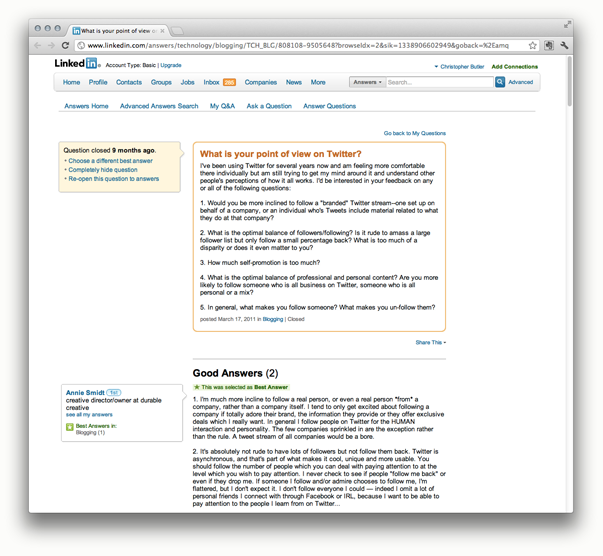I’ve recently had new clients express both interest and anxiety about integrating social media with their website. They were concerned about not having enough new content from their website to post about on a regular basis. This is a legitimate concern, but your website’s new content should not be the only driving factor in developing a social media identity.
It’s all about community
You should definitely use social media to promote new blog posts, newsletters, webinars, etc. We recommend that you post at least two thousand words per month of expertise based content. You’ll also want to announce recent work, new products/services, news, and company achievements. All of this content should live on your website, and you can use social media to drive visitors to those pages and vice versa. However, it can’t be all about you. Do you really want to be that person at the party who only talks about themselves and their achievements?
Social media is all about building a community, and you need to be a contributing member to that community. It is important to remember that your community is not just existing and potential clients/customers. You’ll need to engage with others in your industry including your competitors. Sign up for newsletters, blog digests, and updates from other industry experts. Follow or friend them on social networks. Comment on blog posts and respond to those who comment on yours. Join groups and participate in their discussions.
Become an industry resource
Post news and events related to your industry or industries you serve. Showing your expertise is not just about your writing or company achievements. Demonstrate that you are up-to-date on the latest technologies, trends, and news that affect these industries. Share quotes, articles, images, videos, and audio that you find interesting and insightful. Just be sure to give credit! The key is to become an industry resource. Potential clients are looking for expertise, and showing that you are a resource for others in your field is extremely effective.
You can also use social media to ask questions and start discussions. Our vice president, Chris Butler, uses LinkedIn and Twitter for research and to generate ideas for newsletters and blog posts. Below are examples of ways Newfangled uses social media to connect with our community.

Example of questions Chris Butler asked on LinkedIn about Twitter preferences. You should check out the answers he received. They may help with your approach to creating a social media identity.

A LinkedIn poll asking, “Which social network presents the most real value to your company?”

Social Media is great for starting and participating in discussions related to your industry. The above example is a group Newfangled founded on LinkedIn called Agency Web Development. It has 829 members now and continues to grow every day. We began by closely managing it and starting the conversations. Now it’s almost completely self-sufficient.

A question Christopher Butler posted on Twitter while working on a Newsletter.
These are just some examples of ways to connect with your community using social media. This process also involves identifying the networks that offer the most interaction. We’re all busy, so it doesn’t make sense to spend a lot of time using tools that do not offer much egagement. While Twitter and LinkedIn are effective for us, you may find that focusing on Pinterest and Twitter makes more sense for you. If you podcast or offer audio content, check out Soundcloud.
Also, explore ways that you can integrate social media platforms. Twitter recently increased the number of content partners that are able to embed media and content into expanded tweets. For example, SoundCloud’s HTML5 audio player now works in tweets that contain a SoundCloud URL. Investigate social media management tools like Hootsuite, TweetDeck, and Seesmic that offer a single interface to manage multiple social networks. Any tool that can consolidate this process will be beneficial.
